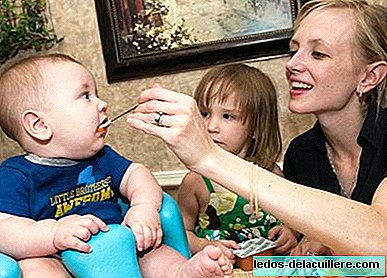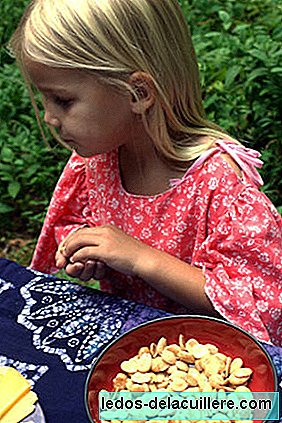
At a time when certain aspects of children's education are frequently delegated to areas other than family education, it is important to remember that it is the parents' responsibility to instill good eating habits in children.
It is in our hands the health of our children, and therefore, we must set an example: teaching to eat properly is a task that we must perform with responsibility, time and dedication, but also in a fun and didactic way, to capture the attention and Support of our children.
It is never too late to collaborate with them in the adoption of new and better ways of feeding, with small steps you can achieve great achievements. Let's see how we can teach good eating habits to our children.
We must convey the most important educational message: having healthy eating habits means eating a varied and balanced diet. This is achieved with a wide variety of foods, as the food pyramid shows. Therefore, with our children we must work with the pyramid and its meaning. It can be in the traditional way or there are even interactive games to complete the pyramid.
Shopping with children is one more opportunity to teach them good habits. In the supermarket, we can teach the different types of food that is offered to us, and the responsibility and freedom we have when choosing the best foods for our health.
Teach the importance of the moment of the meal with concepts like the following:
- How and when to wash our hands (before and after eating).
- Respect for the kitchen and its dangers, since it is one of the main places where domestic accidents occur.
- Good table manners, although it is not about following a strict protocol, but about the basic rules, such as the importance of eating slowly and calmly, not throwing away food, getting up only when necessary ...

Let the children collaborate in the preparation of the food, always taking the appropriate precautions in the kitchen.
Make varied dishes, fleeing the monotony. Include different flavors, colors, textures and consistencies in the dishes, in order to stimulate children's desire to eat. We can also prepare fun dishes and tables. Let's not forget that the presentation of the dishes is key for children to accept food better.
At lunchtime, it is very important to use chairs, dishes, glasses and utensils that children can handle comfortably and do not pose any danger to them.
We must try that the children are participants in the moment of the meal, inviting them to set the table, bring food, collect and clean the table after eating ... Always avoiding giving them utensils or dangerous tasks.
If tensions usually occur during meals, we must help children prepare to eat, offering them activities that favor relaxation.
Children learn and recreate with books and instructional videos on healthy eating. From cartoons like Lazy Town to stories, movies ...
Serve the food in an attractive and relaxed atmosphere: Do not forget that mealtime should be as pleasant and relaxed as possible. Turning that moment into a fight, into reasons for discussion ... will only accentuate the problems that exist regarding the feeding of children.
At the table, have a quiet and not forced conversation, trying to get the children to talk about their experiences with food, as you know, how they smell, etc. In this sense, television is the enemy of communication.
Never use food as a reward or punishment, as they will relate food to a game and not to health needs.
Try to observe and understand the personality and reactions of children with food. Let us not reflect on them our tastes or dislikes, because they can develop different tastes and must be respected.
It is convenient to serve appropriate portions: the portion for a child is not the same as that of an adult, and if we do not serve them in their proper measure we can take room for other necessary foods.
We live in a society that can promote eating disorders and obsessions in the body image of our children. It is our duty to collaborate in the construction of children's self-esteem and to teach the importance of appreciating their personal qualities.
As we see, there are many perspectives to teach good eating habits to children. They all have parents in common as responsible, guides and examples and that mealtime becomes a good time to share with the family. It's never too late to improve those habits, for the elderly either.












